I’ve had the privilege to write about several examples of the Holden Torana A9X here at Barn Finds, but this car is something very different. It was a car that was born out of a desire for international racing success. When this failed to eventuate, it cemented its place in Australian folklore in the hands of one of the greatest characters that the motor racing world has ever seen. This Torana’s racing career was all too short, but the owner has meticulously restored it with an unwavering focus on authenticity. With the work complete, the A9X is set to head to a new home. As we have seen, genuine historic racers with a documented history can command some serious money, and this one is no exception. The owner has listed it for sale here at Australian Muscle Car Sales. The price of admission on this beauty isn’t cheap, with the owner entertaining offers over A$850,000.
Those of you who are regulars here at Barn Finds will probably remember the story of the special “GMP&A” Torana A9X bodyshells that Holden produced. Thirty-three of these bodyshells were “walked” down the production line to be prepared for conversion into race cars. These remain proof positive of the company’s commitment to motorsport because each car received additional welds to improve stiffness and strength. All sound deadening material and joint sealants were deleted, as were unnecessary brackets. Holden Tagged the shells with an identical Body No. of “GMP&A.” This stood for General Motors Parts & Accessories and verified that the bodyshell was a genuine race item produced by the factory. This car wears that Tag, but beside the Body Number is the stamping “B Forbes.” That lifts this shell above its brethren and into the realm of legendary status.
The “B Forbes” designation on this Torana’s Tag stood for a gentleman named Bob Forbes. He was a stalwart of the Australian racing scene who not only raced with some success but was willing to put his money where his mouth was to run his own racing operation. In 1977 he hatched a grand plan. He intended to build two very special examples of the Torana A9X with the express intention of competing in the 1978 Le Mans 24-Hour. As you can see from this article that appeared in Australian Muscle Car Magazine, this A9X would’ve been one wild car. Forbes commissioned two of the GMP&A shells, and they received even closer attention than the other thirty-one had. This work included the addition of various strengthening gussets and the installation of special lightweight bolt-on body panels like front fenders and doors. The shells were removed from the line before entering the paint booth and were sent to the Dulux factory to be painted in two-pack Acran enamel. The colors chosen were Grecian White with Chrome Yellow and March 17th Green (yes, that is an actual paint color!) stripes. Once Dulux completed this work, the bodies were despatched to the Bob Forbes Racing workshop for conversion into Le Mans racers. This process wouldn’t be limited to adding the wild body kit and spoilers that you see in this photo. Under the hood, the Holden 308ci V8 was to be fitted with twin turbochargers and other performance upgrades, and a conservative estimate was that the engine would produce more than 800hp. Sadly, a lack of sponsorship forced Forbes to abandon his plans in early 1978. He converted one of the shells into an Australian Group C race car competing in the Australian Touring Car Championship and the Bathurst 1000. However, the other sat around gathering dust until one of Australia’s greatest characters entered the picture.
Peter Janson, also known as “Captain” Peter Janson, is one of Australia’s genuine characters. Precisely what he is, or was a Captain of has never been made clear. However, he may be one of the few people in history who has officially listed his occupation as “Gentleman.” As you can see from his business card at the time, The Captain didn’t take life too seriously in 1979. Some of The Captain’s past may be shrouded in mystery, but he was renowned for several things in his prime. He could throw lavish parties, and his ability to gain access to exclusive segments of high society made lesser mortals envious. The Captain possessed an uncanny ability to maximize sponsorship opportunities, and he was one of the most effective amateur racing drivers the world has ever seen. A testament to his innate ability is best demonstrated by his results in the annual Bathurst 1000 classic. To score a podium in this race is a massive achievement that many professional drivers can dream of. Janson managed to achieve this feat on three occasions. In 1979, he finished second after making a mere two prior races start in that calendar year. The following year, he eclipsed that achievement by finishing second after making a solitary race start for the year. As you can see, The Captain may not have been a professional, but he knew how to pedal a race car. He stepped in and purchased the unused Forbes bodyshell in 1979, intending to compete in that year’s Bathurst 1000.
When Captain Janson purchased the A9X bodyshell, he sent it to Race Engineer Ian Tate to be transformed into a Bathurst contender. The work included replacing the lightweight Le Mans panels with production items, fitting all of the driveline components, installing a rollcage, and fitting the mandatory interior trim and upholstery. Janson debuted the Torana at the 1979 Sandown 400, which was seen as the warm-up event for the Bathurst 1000. It finished third in that first outing, with a second at Bathurst cementing the driving reputations of The Captain and co-driver Larry Perkins. When you look at this car and the enormous variety of sponsorship signage that it carries, it’s easy to see how adept Janson was at securing sponsorship dollars to fund his racing exploits. As well as its missed Le Mans opportunity, there is one other claim to fame that this car might hold. The A9X version of the Torana was rendered ineligible for Australian competition on January 1st, 1980. This car made its debut on September 9th, 1979, less than three months before it was outlawed. That could potentially make this the last Torana A9X Group C race car ever built. I am not aware of a later car, but I’m happy to be corrected if someone has other information.
When we look at the rear of this Torana, there are a couple of things worth noting. That large rectangular section below the rear bumper plastered with the “Hertz” signage is not a standard Torana part. That is a metal box that houses a 120-liter (31-gallon) foam-filled racing fuel tank. These were a homologated item that moved the fuel tank as low and far back in the car as possible. It was designed to improve the car’s balance and lower its center of gravity for better handling. Colloquially referred to as a “drop tank,” these were seen on virtually every racing A9X. The spindly pieces of silver tubing that you see inside the car are the main components of the safety rollcage. If ever we needed a demonstration of how far safety design has progressed, this is it. Can you imagine any international event sanctioning cars for competition outfitted with aluminum rollcages that were bolted into the vehicles? That is what we find inside this A9X, and when you consider that the rear section of the cage extends to the rear wheel wells and the front stops at the firewall, it is astounding to think that we never lost any competitors in these beasts. The last piece of the safety puzzle rests in the silver rectangle that can be seen just inside the rear hatch. That is the filler opening for the fuel tank. It is a dry-break system similar to the ones that we see on most of today’s race cars, but you can’t help but feel slightly twitchy about the concept of a fuel filler being located inside the passenger compartment of any closed racing car! They are designed not to leak, but nothing is infallible. If I found myself shiny-side down in one of these, I would hope that the dry-break system was functioning correctly. The final thing to note on the back of this A9X is the “Nudge Nudge” signage on the back bumper. This was not an invitation for the competition to test the bumper but was one of Janson’s clever advertising ploys. His primary sponsor during this period was Cadbury/Schweppes. That company was renowned for producing plenty of sugary delights to eat and drink. One of their volume-selling candy bars in 1979 was a product called the Nudge bar. It consisted of caramel and hazelnuts wrapped in chocolate. The company often used to hand their product out to spectators at race meetings where this car appeared, so Janson decided that the bumper was the best place to advertise any product carrying a name like that. Marketing know-how and a sense of humor combined perfectly on the back of this Torana.
Yep, that aluminum tubing really is the rollcage, and since you can’t weld aluminum to steel, the cage is bolted into the bodyshell. Making it more astounding, this is as far forward as the cage extends. As you will see when we delve into the engine bay, there is no evidence of the cage beyond the firewall. Group C racing regulations that were in force also required all interior trim to remain intact. That is why you will find a complete dash, door trims, and a full complement of seats still present. The only leeway that competitors received was that they were allowed to remove the carpet. This change was allowed on safety grounds because the hot racing exhausts runs close to the floor, and more than one car had an interior fire ignited by the combination of a hot exhaust and flammable carpet. Competitors could also substitute a racing seat for the standard driver’s seat and fit a more appropriate set of gauges in place of the factory items. This A9X features these upgrades, but the gauge cluster is undoubtedly configured on a “need to know” basis. The driver receives a large tachometer with a redline set at 7,400rpm. There is a water temperature gauge, an oil pressure gauge, and a prominent warning light set to ignite if the oil pressure drops to zero. As for any other temperatures and pressures, you only knew that these had gone beyond their maximums when something went “bang.” These cars were basic, but as this one has proven, they were effective.
The 1979 Bathurst 1000 was the second where Janson was paired with Larry Perkins. It also marked the second time that the pair occupied a spot on the podium at the end of 1000 kilometers of fierce competition. Perkins, who had made it to Formula 1 at one point, would go on in subsequent years to stand on the top step of the Bathurst podium an incredible six times. In 2004, the owner managed to find both Janson and Perkins in the same place simultaneously during a historic racing event. He grabbed that opportunity to have both gentlemen autograph the A9X’s glovebox door, and this has been reattached to the car for inclusion in the sale.
If ever you needed proof of how closely related Group C racing cars were to their production counterparts, this photo of the engine bay offers a graphic demonstration. The current owner has performed a meticulous restoration, and the engine bay presents precisely as it would’ve at Bathurst in 1979. If you look closely, you can see no evidence of the rollcage encroaching into the engine bay. Also, note the standard radiator, original master cylinder and booster, heater box, and even the standard windshield washer bottle! Powering the A9X is the legendary 308ci Holden V8. In production form, this engine would have pumped out 240hp. Engine builders were always pretty coy when it came to quoting specific figures, but in racing form, it is believed that an A9X engine nudged just beyond 400hp. On Bathurst’s famous Conrod Straight, this was enough to push a well-built A9X to around 170mph. Engine regulations under Group C were an interesting mix. Builders could not change the engine’s capacity, while the production engine block, cylinder heads, and intake had to be utilized with no effective changes. However, the cylinder head could be fitted with stainless valves in place of the originals, while pistons, rods, crankshafts, exhausts, camshafts, and carburetors were all free. Working our way further back, the owner could fit a more durable clutch, but the A9X was homologated to run with a Super T10 manual transmission and a Salisbury rear end. The A9X was an evolution of the previous Torana L34, and it was the rear end that was the secret to its success. The L34 was forced to compete with its production “banjo” rear end that was notoriously fragile. The Salisbury unit not only addressed this weakness but added rear disc brakes to the equation to create a better mousetrap for Holden competitors. You might wonder how authentic this car is since it is now a 42-year-old race car. The answer is that its originality is beyond question. The current owner has had the engine rebuilt, but it is the same engine used during the 1979 Bathurst 1000. Everything is original, from the Weber IDF carburetors to the special high-volume oil pan. When you work your way through the entire driveline, every component is from that 1979 Bathurst campaign, and every piece has been carefully restored to a point where this car is ready to grace the race track once again. Everything is documented, and the vehicle’s original “CAMS” competition Log Book and a collection of verifying paperwork are included in the sale.
When its racing career ended under the ownership of Peter Janson, the A9X was not only surplus to requirements, but it was no longer eligible to compete under updated Group C regulations. As is often the case, the old had to make way for the new, and in Holden’s case, the Torana A9X was superseded by the Commodore. In November of 1980, Janson parted with the car, and its new owner got what was one of the bargains of the century. He received the complete car and a collection of spares for the princely sum of $5,000. That’s enough to make grown men weep today. The new owner used the Torana essentially unchanged for hillclimb and circuit sprint competition for a few years, and that owner placed it into storage for around two decades.
The current owner came onto the scene in around 2003, and when he realized what he had found, he went through the arduous process of returning the A9X to its former glory. He discovered that the car was complete, unmolested, came with all of the appropriate documentation, and was a no-hits car in keeping with its racing history. When he stripped the car for a repaint, he found that below the Yellow paint, which had been a Janson hallmark of the time, the original White, Yellow, and Green paint that Dulux had applied was intact. It rates as a remarkable discovery, and the owner photographically documented this before returning the car to its Bathurst ’79 livery and specifications. The car has returned to the track in limited historic racing since the owner completed the work, and while it wears a few chips and marks, these are within keeping for a vehicle of this type and age.
Some historic racing cars can have an interesting story to tell, but this 1978 Torana A9X brings together enough stories to almost justify its own book. It combines a legendary Australian performance car, the ambition of a small group of enthusiasts to conquer one of the toughest races on the planet, and merges these with one of the greatest characters to ever don a race suit and helmet. Today, Janson is a spritely 81-year-old who still possesses his quick wit and the trademark sense of humor that made him a firm favorite in his racing prime. It seems appropriate that one of the cars he raced to success when he was in his prime is just as spritely as he is. I wonder if he’d fancy slipping behind the wheel to relive old times. That’s something that I’d pay to see.
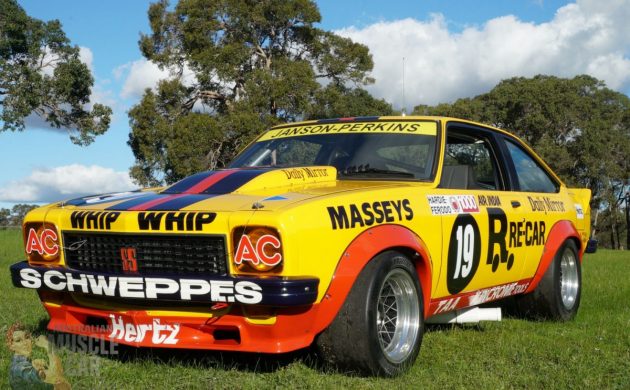
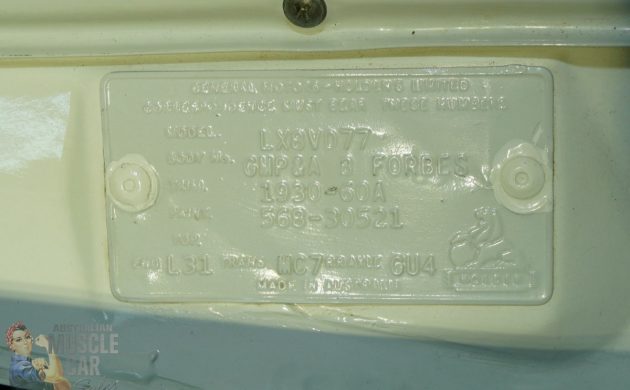

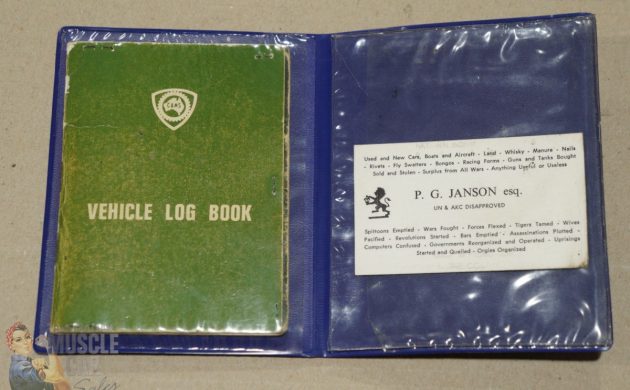
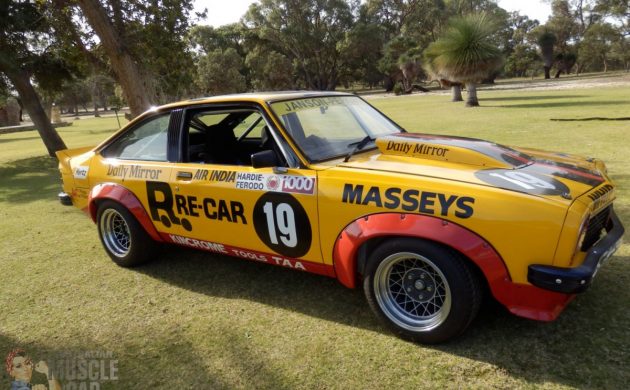

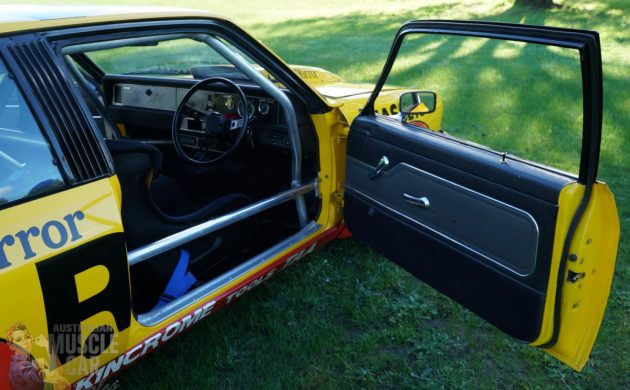

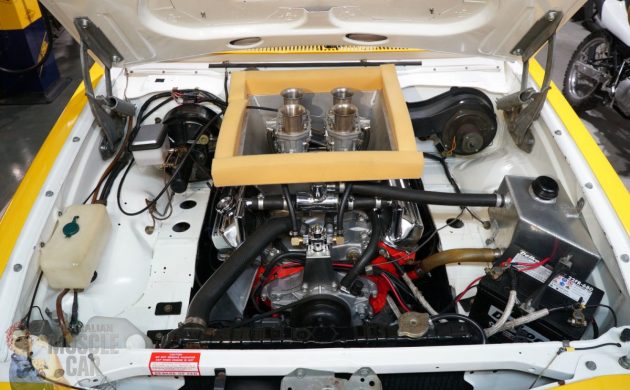
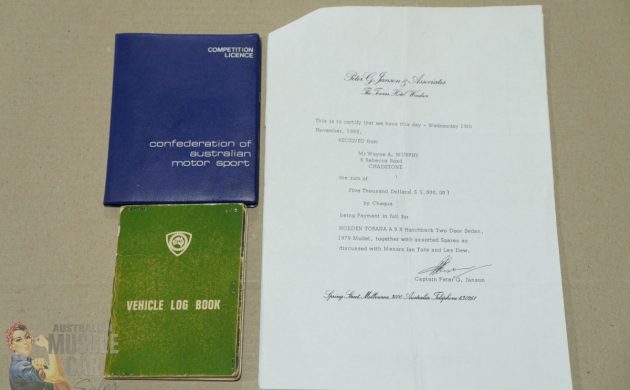
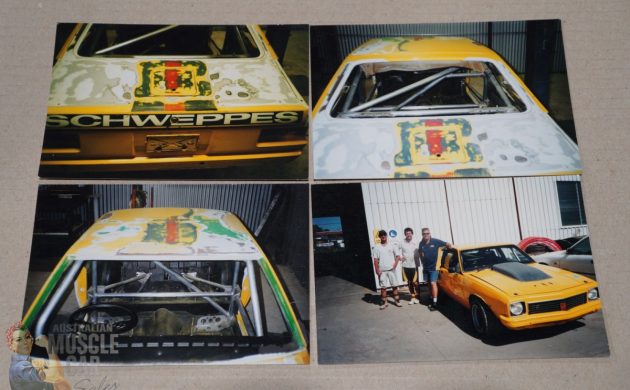



Great story and write up Adam! To a current SCCA road racer the roll cage was an interesting feature. Our rules allow bolt in welded or bolted together cages and some of our classes limit the forward supports to no farther past he fire wall. No car car class uses aluminum for the tubing. The production class we run in, similar to the Holden’s, allows and recommends tubes connecting the front hoop to the area of the front suspension to handle front end crashes. I assume that the drivers of this car were very lucky not to have had to test out the front crash capability in their races. Great car.
Ally cages were banned after Henri Toivonen’s crash and the end of Group B.
We’re allowed bolt-in cages too, but the bolts aren’t an issue as much as the spreader plates on the other side of the bodywork.
Cheers, bobhess. I appreciate your feedback. I consider it an honor to write about cars like this. You might be interested to know that the Torana just sold for an eye-watering $900,000.
Thank you very much, bobhess, for your insights. It adds that much more to another terrific feature and well done research that Adam has done once again.
Thank you for your kind words, Nevadahalfrack. I always appreciate the feedback. It’s good to know that people enjoy my work.
A German Co.named Matter used to market alum.roll cages back in the 80’s.Mstly for German cars.
I remember seeing this car at Sandown (and maybe Calder) back in the day. I even met The Captain once at a racing-related party and to see him “work the crowd” as he lined up sponsors was a thing of beauty (and envy) !!
Without a doubt this is the BEST WRITE UP EVER on a car site — and that includes that other site that also begins with a “B.”
Thank you.
RB
Thank you so much for your feedback Reg. It is greatly appreciated. It’s interesting that The Captain still hosts parties and little events for former competitors. He recently held one with Allan Moffat, Fred Gibson, Colin Bond, Larry Perkins, and a few others. From what I’ve seen and heard, it was a brilliant event. The Captain is a unique individual, and we’ll probably never see his like again. Thank you again for your kind words. By the way, the Torana has just sold for $900,000!
Hi Adam, I just came across this article you wrote about one of Bob Forbes A9X. I was Bobs mechanic when the Le Mans cars were built and I was to be team leader of one team of personnel during the race. I also spent a large amount of time at Dandenong factory when the race car shells were being built. The first two shells that came off the line were Bob’s and I tow the first one back to Sydney to prepare it for Bathurst, the work was done at Suttons Hombush, where myself and a couple of others worked on customers car during the day and worked on the race cars after hours. The race shells were all marked with a number on the drivers door. The first car competed at Bathurst in its original blue colour with MacDonald sponsorship, both of our cars were blue, this car was 001. The second car was painted white with the Le Man “Martini” stripes down the side, car number 002, this is now owned by a gentleman in Coffs Harbour. If you have access to old papers, an article was written about our plans for an assault on Le Mans and placed front page of the Sunday Herald with our names and the full plans, this was done to try and raise sponsorship. The cars that were earmarked for Le Mans were built to specify require to meet group regulations, the one thing that identifies the two shells were the ball jointed rear ends, plus a couple of other small things. I know of one of the Le Mans shells is now a road car in Canberra and I tried to buy it a number of years ago but the owner won’t part with it and the last I heard it is sitting in a carport and can’t be registered in the ACT due to the ball jointed rear end and is now orange. Bob had a number of A9Xs and a couple of L34s that Shepard converted for us with floor inserts for the new diffs and the T10 gearbox. The A9Xs were designated as L31 motors but we ran the L34 motor which were built by Ian Tait and I spent a bit of time with him building the motors. Laurie Sutton was a avid race fan and I was given a large amount of time off to work on the race cars. I only found some photos of us building the first A9X for Bathurst a couple of years ago and shows how dedicated with a mattress next to the car where we would collapse for an hour or two. Hope you find this interesting. Cheers Greg Smith
Thank you so much for the information, Greg. It is wonderful to gain your insight on the LeMans project because it showed so much promise. Word of mouth is one thing, but hearing the story from someone who was actually there is fantastic. It’s a shame you were unable to buy the Torana because preserving it is vitally important. This is especially true now we live in a world where Holden no longer exists. I hope the owner relents as it deserves to go to someone who was there from its very beginning. Good luck, mate.